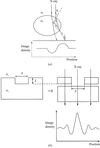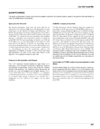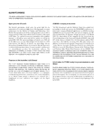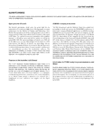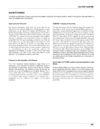issue contents
May 2002 issue
5th Harima International Forum HIF2001
Harima Science Garden City, Japan 12-14 July 2001

Cover illustration: X-ray refraction contrast image of the chest in a hairless mouse. Courtesy of Y. Kagoshima.
facility information
research papers
The impact of third-generation high-energy synchrotron radiation sources on the development of X-ray diffraction imaging is reported, with examples from the ESRF.
The performance of a Fresnel zone plate has been tested by observing the focusing property of higher-order diffraction.
The status of the development of parabolic refractive X-ray lenses is described, and the possibilities for micrometre and submicrometre focusing and for X-ray imaging in absorption and phase contrast are illustrated.
A Zernike-type imaging microscope using a sputtered-sliced Fresnel zone plate has been developed and tested at an X-ray energy of 25 keV.
The performance of elemental analysis of a CCD photon-counting system in combination with a full-field X-ray fluorescence microscope has been evaluated. Two-dimensional elemental maps could be obtained with an energy resolution of 350 keV.
High-resolution phase-contrast microscopy using Zernike's method has been demonstrated by the use of zone plate optics. Specimens transparent to hard X-rays have been successfully imaged with a high image contrast by the phase-contrast method.
Principle and experimental demonstrations of phase-contrast X-ray imaging based on interferometry are described.
Novel imaging of the fine structures of the ribs of a pig and a specimen of human osteosarcoma utilizing the spatial coherence of X-rays was successfully performed with an incident X-ray energy of 30 keV at SPring-8, Japan.
Three recently proposed methods for rapid quantitative in-line X-ray imaging are analyzed and tested on images of a model sample collected using synchrotron radiation.
Cu/Al multilayer Fresnel zone plates (outermost zone width 0.25 µm) have been developed by DC sputtering deposition. At the undulator beamline BL47XU of SPring-8 an almost diffraction-limited microbeam of 0.3–0.35 µm has been attained and a clear image of the fine line-and-space resolution test pattern up to 0.2 µm was observed.
Refraction-enhanced imaging for a simple object and complicated objects are described in simple projection image and tomographic reconstruction. An example of phase retrieval for a single projection image is presented, and some problems for applications to thick and complicated specimens are also discussed.
The difference in surface-strain distribution caused by various steps of silicon-wafer manufacturing, i.e. slicing, lapping, etching, grinding and polishing, has been studied.
X-rays with an angular divergence of about 0.01 arcsec were produced by using only one collimator crystal. Plane-wave X-ray topographic images of dislocations, growth striations and grown-in microdefects in the CZ-Si crystals were obtained.
Topography studies of electronic materials are presented, covering the range from voids and precipitates in almost perfect float-zone and Czochralski silicon, dislocations in gallium arsenide grown by the liquid-encapsulated Czochralski technique, the vapour-pressure controlled Czochralski technique and the vertical-gradient freeze techniques, stacking faults and micropipes in silicon carbide to misfit dislocations in epitaxic heterostructures.
A Zernike-type phase-contrast X-ray microscope with a zone plate and a phase plate has been constructed at the Photon Factory BL3C2. Tantalum line patterns as fine as 0.3 µm in width could be resolved.
Sputtered-sliced Fresnel zone plates for hard X-ray focusing have been developed. As an example of the microbeam technique, a two-dimensional distribution of constituent elements in forensic samples has been obtained using fluorescent scanning microscopy.
current events
Free 

Free 

Free 

Free 



 journal menu
journal menu


























